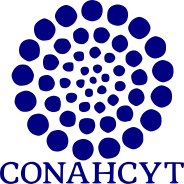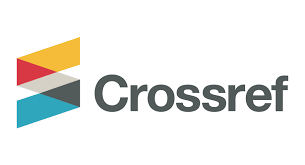Genetic diversity and landscape genetic structure of Capsicum annuum L., from wild, backyard and cultivated populations in a heterogeneous environment in Oaxaca, Mexico
Diversidad genética y estructura genética del paisaje de Capsicum annuum L., de poblaciones silvestres, de traspatio y cultivadas en un ambiente heterogéneo en Oaxaca, México
DOI:
https://doi.org/10.18387/polibotanica.53.6Palabras clave:
C. annuum, domestication process, genetic diversity, population bottlenecks, effective population size., enResumen
Domesticated species, have been exposed during their evolution to pressures that occurred at different intensities and regulate the variation of genetic structure, phenotypic and divergence among cultivated and wild populations. We analyzed, the genetic diversity, structure, inbreeding, effective population size, population bottlenecks and the ecological niche divergence, of wild, backyard and cultivated populations of Capsicum annuum. We analyzed, 13 populations across Oaxaca, Mexico, using nuclear microsatellite markers. C. annuum, shown higher levels of genetic diversity in wild, backyard and cultivated populations. That indicated, a strong selection occurred at different phenotypes could generate genetically diverse materials that has favored population adaptation to specific locations and environments. Domesticated chiles, in traditional agricultural habitats harbor unique gene pools and thus act as genetic variation reservoirs and to conserve biodiversity. The genetic inbreeding and the effective population size is not too low to genetic harmful. It is necessary, initiate programs to select chile varieties, to rescuing some interesting traits, to expand the genetic base of crops. The inclusion, of genetically diverse germplasm can be utilized to breeding programs through the selection of features of interest. Genetic differentiation, was moderated in populations of C. annuum, we detected four geographic regions with a genetic structuring for populations of C. annum. We could suggest that in chile populations, a strong selection could generate genetically divergent materials. We suggested, that climatic complexity and altitudinal gradients in Oaxaca state, could encouraging diversification for chile diversity and domestication.
Referencias
Aguilar R. V. H., T. Corona T., P. López L., L. Latournerie M., M. Ramírez M., H. Villalón M. y J. A. Aguilar C. (2010) Los chiles de México y su Distribución. SINAREFI, Colegio de Postgraduados, INIFAP, IT-Conkal, UANL, UAN. Montecillo, Texcoco, Estado de México. 114.
Alonso, R. A., Moya, C., Cabrera, A., Pilar, P., Quiroga, R., Rosales, M. A. & Zuart, J.L. (2008). Evaluación in situ de la variabilidad genética de los chiles silvestres (capsicum spp.) en la región frailesca del estado de Chiapas, México. Cultivos Tropicales, 29, 49-55.
Arellano, E, & Casas, A., (2003) Morphological variation and domestication of Escontria chiotilla (Cactaceae) under silvicultural management in the Tehuacán Valley, Central Mexico. Genetic Resources Crop Evolution, 50, 439–453. https://doi.org/10.1023/A:1023902704131
Bautista-Cruz, M., Carrillo-Rodríguez, J. C., Chávez- Servia, J. L., & Villegas-Aparicio, Y., (2012). Diferencias morfológica entre variantes de chile (Capsicum annuum L.) de Oaxaca, en invernadero. Memorias de la Novena Convención Mundial del Chile. Zacatecas, México. 373-379.
Belkhir, K., Borsa P., Chikhi L., Raufaste N. & Bonhomme F. 1996-2004 GENETIX 4.05, logiciel sous Windows TM pour la génétique des populations. Laboratoire Génome, Populations, Interactions, CNRS UMR 5171, Université de Montpellier II.
Becerra V.V. & Paredes C.M. (2000). Uso de marcadores bioquímicos y moleculares en estudios de diversidad genética. Instituto de investigaciones Agropecuarias, Centro Regional de Investigación Quilamapu, Chile. http://dx.doi.org/10.4067/S0365-28072000000300007
Beerli P, Felsenstein J (2001) Maximum likelihood estimation of a migration matrix and effective population sizes in n subpopulations by using a coalescent approach. Proceedings of the National Academy of Sciences ofthe United States of America, 98, 4563–4568. https://doi.org/10.1073/pnas.081068098
Bornet B, Goraguer F, Joly G, & Branchard M (2002) Genetic diversity in European and Argentinian cultivated potatoes (Solanum tuberosum subsp. tuberosum) detected by intersimple sequence repeats (ISSRs). Genome 45,481–484. https://doi.org/10.1139/g02-002
Broennimann O, Fitzpatrick MC, Pearman PB, Petitpierre B, Pellissier L, Yoccoz NG, Thuiller W, Fortin M.-J, Randin C, Zimmermann NE, Graham C.H. Guisan A (2012) Measuring ecological niche overlap from occurrence and spatial environmental data. Global Ecology and Biogeography 21: 481–497. https://doi.org/10.1111/j.1466-8238.2011.00698.x
Casas A, Caballero J: Traditional management and morphological variation in Leucaena esculenta (Moc. Et Sessé ex A.D.C.) Benth. (Leguminosae: Mimosoidae) in the Mixtec region of Guerrero, Mexico. Econ Bot 1996, 50:167–181.
Casas A, Otero-Arnaiz A, Pérez-Negrón E, & Valiente-Banuet A., (2007) In situ Management and Domestication of Plants in Mesoamerica. Annals of Botany 100, 1101–1115. https://doi.org/10.1093/aob/mcm126
Charlesworth B, Nordborg M, &Charlesworth D., (1997). The effects of local selection, balanced polymorphism and background selection on equilibrium patterns of genetic diversity in subdivided populations. Genetics Research 70, 155-174. https://doi.org/10.1017/S0016672397002954
Chessel D, Dufour AB, Thioulouse J (2004) ‘The ade4 Package - I: One-table Methods’, R News 4: 5–10.
Contreras-Tolelo A., López S. H., Santacruz V. A., Valadez M. E., Aguilar R. V., Corona T. T. & López P. A. (2011). Diversidad genética en México de variedades nativas de chile ‘poblano’ mediante microsatélites. Revista Fitotecnia Mexicana. 34, 225 – 232.
Corona-Torres T., García- Velázquez A., Castillo- González F., Montero- Tavera V., & Azpiroz-Rivero H. S. (2000). Caracterización isoenzimática de la diversidad genética de colectas de chile (Capsicum annuum L. y Capsicum chinense Jacq.) Revista Chapingo Serie Horticultura, 6, 5-17. https://doi.org/10.35196/rfm.2018.3.227-236
Cornuet JM, Luikart G., (1996). Description and power analysis of two tests for detecting recent population bottlenecks from allele frequency data. Genetics, 144, 2001–2014
Dieringer D. and Schotterer C. (2003). Microsatellite analyzer (MSA): a platform independent analysis tool for large microsatellite data sets. Molecular Ecology Resources 3,167-169. http://doi.wiley.com/10.1046/j.1471-8286.2003.00351.x
Djian-Caporalino C, Lefebvre V, Sage-Daube’ze A. M., & Palloix, A. (2007). Capsicum. In: Singh RJ, Genetic resources, chromosome engineering and crop improvement series, Vegetable crops. CRC Press, 3, 185–243.
Doebley J., F, Gaut B., S & Smith B.,D., (2006). The molecular genetics of crop domestication. Cell, 127, 1309–1321. https://doi.org/10.1016/j.cell.2006.12.006
Evanno, G., Regnaut, S., & Goudet, S. (2005). Detecting the number of clusters of individuals using the software STRUCTURE: a simulation study. Molecular Ecology, 14, 2611–2620. https://doi.org/10.1111/j.1365-294X.2005.02553.x
Eshbaugh, W. H. (1993). History and exploitation of a serendipitous new crop discovery, NewCrop, 132 – 139.
Excoffier, L. & H.E. L. Lischer (2010) Arlequin suite ver 3.5: A new series of programs to perform population genetics analyses under Linux and Windows. Molecular Ecology Resources, 10, 564-567. https://doi.org/10.1111/j.1755-0998.2010.02847.x
Frankham R (2005). Genetics and extinction, Biological Conservation, 126, 131–140. https://doi.org/10.1016/j.biocon.2005.05.002
Franceschetti U. (1971). Natural cross pollination in pepper (Capsicum annuum L.) Eucarpia, 346-353.
Falush D., Stephens M, & Pritchard J.K., (2003). Inference of population structure using multilocus genotype data: linked loci and correlated allele frequencies, Genetics, 164, 1567–1587
Ferrusquía-Villafranca, I. (1993). Geology of Mexico, Biological diversity of Mexico 3-107.
Gao, L., Tang, J., Li, H., & Jia, J., (2003) Analysis of microsatellites in major crops assessed by computational and experimental approaches. Molecular Breeding, 12, 245–261. https://doi.org/10.1023/A:1026346121217
García-Mendoza, A., J., (2004). Integración del conocimiento florístico del estado, Biodiversidad de Oaxaca, 305-325.
Gepts, P., (2004). Crop Domestication as a Long-Term Selection Experiment. Plant Breeding Reviews, 24,1-44. https://doi.org/10.1002/9780470650288.ch1
González M. M., Bosland, P. W. (1991). Germoplasma de capsicum en las Américas, Universidad de Costa Rica. 7, 57-59.
González I., Arias, Y., Quiñones, M., Miranda I., Rodríguez, Y., & Peteira, B., (2011). Variabilidad molecular de genotipos de pimiento (Capsicum annuum l.) del programa de mejoramiento genético para la resistencia a pvy. Protección Vegetal. 26, 69-72
Félix Alberto Guzmán, Stanley Holmes Moore, M. Carmen de Vicente, Molly M Jahn. (2019) Microsatellites to enhance characterization, conservation and breeding value of Capsicum germplasm. Genet Resour Crop Evol https://doi.org/10.1007/s10722-019-00801-w
Guzman, F. A., Ayala, H., Azurdia, C., Duque, M. C., & De Vicente, M.,C., (2005). AFLP assessment of genetic diversity of Capsicum genetic resources in Guatemala: home gardens as an option for conservation. Crop Science, 45, 363–370. https://doi.org/10.2135/cropsci2005.0363
Hanácek, P. T., Vyhnánek, M., Rohrer, J., Cieslarová, & H Stavelíková (2009). DNA polymorphism in genetic resources of red pepper using microsatellite markers. Horticultral Science, 36, 127-132.
Hanski, I., Mononen, T., (2011). Eco-evolutionary dynamics of dispersal in spatially heterogeneous environments. Ecology Letters, 14, 1025–1034. https://doi.org/10.1111/j.1461-0248.2011.01671.x
Heiser, C. B., (1976). Peppers Capsicum (Solanaceae). The Evolution of Crops Plants. 265-268.
Hernández-Verdugo, S, Luna-Reyes, R., & K. Oyama, (2001). Genetic structure and differentiation of wild and domesticated populations of Capsicum annuum from Mexico. Plant Systematics and Evolution, 226, 129-142. https://doi.org/10.1007/s006060170061
Hernández-Verdugo V.S., González R.A., Sánchez P. P., Casas A. & Oyama K. (2006). Estructura y diferenciación genética de poblaciones silvestres y domesticadas de chile del noroeste de México analizada con isoenzimas y RAPDs. Fitot. Mex. 29, 25-29.
Hubisz, M., Falush, D., Stephens, M., & Pritchard, J., (2009). Inferring weak population structure with the assistance of sample group information. Molecular Ecoly Resources, 9, 1322–1332. https://doi.org/10.1111/j.1755-0998.2009.02591.x
Hufford, M. B., Xu, X., Van Heerwaarden, J., Pyhäjärvi, T., Chia, J-M., Cartwright, R. A., Elshire, R. J., Glaubitz, J. C., Guill, K. E., Kaeppler, S. M., Lai, J., Morrell, P. L., Shannon, L. M., Song, C., Springer, N. M., Swanson-Wagner, R. A., Tiffin, P., Wang, J., Zhang, G., Doebley, J., McMullen, M. D., Ware, D., Buckler, E. S., Yang, S., & Ross-Ibarra, J. 2012. Comparative population genomics, Nature, Genetics, 44, 808-811. https://doi.org/ 10.1038/ng.2309
Ibiza, V. P., Blanca, J., Cañizares, J., & Nuez F. (2012). Taxonomy and genetic diversity of domesticated Capsicum species in the Andean region. Genetic Resources Crops and Evolution, 59, 1077–1088. https://doi.org/10.1007/s10722-011-9744-z
Ince, A. G., Karaca, M., & Onus A. N., (2010) . Genetic relationships within and between Capsicum species. Biochem Genet 48 :83–95. https://doi.org/ 10.1007/s10528-009-9297-4
Jombart, T., (2008). adegenet: a R package for the multivariate analysis of genetic markers. Bioinformatics, 24, 1403–1405. https://doi.org/ 10.1093/bioinformatics/btn129
Jombart, T., Devillard, S., & Balloux, F. (2010). Discriminant analysis of principal components: a new method for the analysis of genetically structured populations. BMC Genomics, 11: 94. https://doi.org/10.1186/1471-2156-11-94
Kwon, Y. S., Lee, J. M., Yi, G. B., Yi, S. I., Kim, K. M., Soh, E.H., Bae, K.M., Park, E. K., Song, I. H., & Kim BD (2005). Use of SSR markers to complement tests of distinctiveness, uniformity, and stability (DUS) of pepper (Capsicum annuum L.) varieties. Molecular Cells, 19, 428–435
Lande, R., (1993). Risks of population extinction from demographic and environmental stochasticity and random catastrophes. The American Naturalist 142, 911–927.
Larson, G., Piperno, D. R., Allaby, R. G., Purugganan, M. D., Andersson, L., Arrollo-Kalin, M., Barton, L., Vigueira, C. C., Denham, T., Dobney, K., Doust, A. N., Gepts, P., Gilbert, M. T., Gremillion, K. J., Lucas, L., Lukens, L., Marshall, F.B., Olsen, K. M., Pires, J. C., Richerson, P. J., Rubio de Casas, R., Sanjur, O. I., Thomas, M. G., & Fuller, D. Q., (2014) Current perspectives and the future of domestication studies. Proceedings of the National Academy of Sciences of the United States of America, 111, 6139-6146. . https://doi.org/10.1086/285580
Latournerie-Moreno L., J. S. López-Vázquez, G. Castañón-Nájera, J. O. Mijangos-Cortéz, G. Espadas-Villamil, A. Pérez-Gutiérrez y E. Ruiz-Sánchez (2015) Evaluación agronómica de chile habanero (Capsicum Chinense Jacq.). Agroproductividad 8:24-29
Lefort, F., & Douglas G.C. (1999). An efficient micro-method of DNA isolation from mature leaves of four hardwood tree species Acer, Fraxinus, Prunus and Quercus. Annals of Forest Science, 56, 259-263.
Long-Solís. J. (1986). Capsicum y Cultura: La historia del Chilli. Fondo de Cultura Económica México, 203
S. Teresa López-Espinosa1, Luis Latournerie-Moreno1*, Guillermo Castañón-Nájera2, Esaú Ruiz-Sánchez1, Juan F. Gómez-Leyva3, Rubén H. Andueza-Noh1 y Javier O. Mijangos-Cortés4 (2018) GENETIC DIVERSITY OF HABANERO PEPPER (Capsicum chinense Jacq.) USING ISSR. Rev. Fitotec. Mex. Vol. 41 (3): 227 - 236, 2018. https://doi.org/10.35196/rfm.2018.3.227-236
Luikart, G., & Cornuet, J. M., (1998). Empirical evaluation of a test for identifying recently bottlenecked populations from allele frequency data. Biological Conservation 12, 228–237. https://doi.org/10.1111/j.1523-1739.1998.96388.x
Lynch, M., Conery, J., Burger, R., (1995). Mutation accumulation and the extinction of small populations. The American Naturalist, 146, 489–518. . https://doi.org/ 10.1086/285812
Manni, F., Guerard, E. & Heyer E. 2004. Geographic patterns of (genetic, morphologic, linguistic) variation: how barriers can be detected by ‘‘Monmonier’s algorithm’’. Human Biology, 76,173-190. https://doi.org/ 10.1353/hub.2004.0034
Mcleod, M. J., Guttman, S. I., Eshbaugh, W. H., & Rayle, R. E., (1983) .An electrophoretic study of evolution in Capsicum (Solanaceae). Evolution, 37, 562 – 574. https://doi.org/ 10.1111/j.1558-5646.1983.tb05573.x
Medina, C. I., Lobo, M. & Gómez, F. A. (2006). Variabilidad fenotípica en poblaciones de ají y pimentón de la colección colombiana del género Capsicum, Corpoica- Ciencia y Tecnología Agropecuaria, 7, 25-39. https://doi.org/ 10.21930
Miller, A., , & Schaal, B., (2005) . Domestication of a Mesoamerican cultivated fruit tree, Spondias purpurea. Proceedings of the National Academy of Sciences, 102, 12801 – 12806. https://doi.org/ 10.1073/pnas.0505447102
Minamiyama, Y., Masato, T. E., & Masashi, H. E., (2006). An SSR-based linkage map of Capsicum annuum. Molecular Breeding, 18, 157–169. . https://doi.org/ 10.1007/s11032-006-9024-3
Meyer, R.S., & Purugganan, M. D., (2013). Evolution of crop species: genetics of domestication and diversification. Nature Reviews Genetics, 14, 840-852. https://doi.org/ 10.1038/nrg3605
Moses, M., Umaharan, P. & Dayanandan, S., (2014). Microsatellite based analysis of the genetic structure and diversity of Capsicum chinense in the Neotropics. Genetic Resources Crops Evolution, 61, 741–755. https://doi.org/ 10.1007/s10722-013-0069-y
Mugeti, E., Snow, A., Rajkumar, M., Pasque, R., Ponniah, H., Daunay, M., & Davidar P., ( 2015). Genetic diversity and population structure of wild/ weedy eggplant ( Solanum insanum , Solanaceae) in southern india: implications for conservation. American Journal of Botany, 102, 140 – 148
Ortiz-Pérez, M. A., Hernández-Santana, J. R., Figueroa-Mah-Eng, J. M., (2004). Reconocimiento fisiográfico y geomorfológico. Biodiversidad de Oaxaca, 43-54.
Pacheco-Olvera, A., Hernández, V. S., Rocha, R. V., González, R. A. & Oyama K. (2012). Genetic Diversity and Structure of Pepper (Capsicum Annuum L.) from Northwestern Mexico Analyzed by Microsatellite Markers. Crop Science, 52, 231-241. https://doi.org/10.2135/cropsci2011.06.0319
Parra, F., Casas, A., Peñaloza-Ramírez, J. M., Cortés-Palomec, A. C., Rocha-Ramírez, V., & González-Rodrıíguez A. (2010). Evolution under domestication: ongoing artificial selection and divergence of wild and managed Stenocereus pruinosus (Cactaceae) populations in the Tehuaca´n Valley, Mexico. Annals Botany , 106, 483–496. https://doi.org/ 10.1093/aob/mcq143
Pickersgill, B., (2007). Domestication of Plants in the Americas: Insights from Mendelian and Molecular Genetics. Annals of Botany, 100, 925-940. https://doi.org/ 10.1093/aob/mcm193
Piry S, Luikart G, Cornuet JM (1999) BOTTLENECK: a computer program for detecting recent reductions in the effective population size using allele frequency data. J Hered 90, 502–503. https://doi.org/10.1093/jhered/90.4.502
Pritchard, J. K., Stephens, M., & Donnelly, P., (2000) Inference of population structure using multilocus genotype data. Genetics, 155, 945–959.
Rai V. P., Kumar R., Kumar S., Rai A., Kumar S., Singh M., Singh S. P., Rai A. B., & Paliwal R. (2013). Genetic diversity in Capsicum germplasm based on microsatellite and random amplified microsatellite polymorphism markers. Physiology and Molecular Biology Plants, 19, 575–586. https://doi.org/ 10.1007/s12298-013-0185-3
Renaut, S., Rieseberg, L. H.., (2015). The accumulation of deleterious mutation as a consequence of domestication and improvement in sunflowers and other Compositae crops. Molecular Biology and Evolution, 32, 2273-2283. https://doi.org/ 10.1007/10.1093 / molbev / msv106
Rodríguez, J.; Peña, O. V. P.; Gil, M. A.; Martínez, C. B.; Manzo, F. y Salazar, L. L. 2007. Rescate in situ del chile “poblano” en Puebla, México. Rev. Fitotec. Mex. 30:25-32.
Rodríguez, J. M., Berke, T., Engle L., & Nienhum. L., (1999) Variation among and within Capsicum species revealed by RAPD markers. Theoretical and Applied. Genetics, 99, 147-156
Ronce, O., & Olivieri, I., (2004). Life-history evolution in metapopulation. Ecology, Genetics and Evolution of Metapopulations, 227–257. https://doi.org/ 10.1016/B978-012323448-3/50012-X
Toledo-Aguilar R., H. López-Sánchez, A. Santacruz-Varela, E. Valadez-Moctezuma, P. A. López, V. H. Aguilar-Rincón, V. A. González-Hernández and H. Vaquera-Huerta (2016) Characterization of genetic diversity of native ‘Ancho’ chili populations of Mexico using microsatellite markers. Chilean Journal of Agricultural Research 7:18-26.
Van Oosterhout, C., Weetman, D., & Hutchinson, W. F., (2006) Estimation and adjustment of microsatellite null alleles in non-equilibrium populations. Molecular Ecology Resources, 6, 255–256. https://doi.org/10.1111/j.1471-8286.2005.01082.x
Vaughan, D. A., E. Balazs, & Heslop-Hamson, J. S., (2007) From Crop Domestication to Super-Domestication. Annals of Botany, 100, 893-90. https://doi.org/ 10.1093/aob/mcm224
Velásquez, V. R.; Medina, A. M. M. y Luna, R. J. J. 2001. Sintomatología y géneros de patógenos asociados con las pudriciones de la raíz de chile (Capsicum annuum L.) en el Norte Centro de México. Rev. Mex. Fitopatol. 19:175-181
Vera-Guzmán, A. M., Chávez-Servia, J. L., Carrillo-Rodríguez, J. C., & López, M. G., (2011). Phytochemical evaluation of wild and cultivated pepper (Capsicum annuum L. and C. pubescens Ruiz & Pav.) from Oaxaca, Mexico. Chilean J. Agricultural Research, 1, 578-585. http://dx.doi.org/10.4067/S0718-58392011000400013
Votava, E., B. Jit, & Bosland. (2005). Genetic diversity of chile (Capsicum annuum var. annuum L.) landraces from northern New Mexico, Colorado, and Mexico. Economyc Botany, 59, 8–17. https://doi.org/10.1663/0013-0001(2005)059[0008:GDOCCA]2.0.CO;2
Waples R.S. (2006). A bias correction for estimates of effective population size based on linkage disequilibrium at unlinked gene loci. Conservation Genetics, 7:167-184. https://doi.org/10.1007/s10592-005-9100-y
Waples, R.S., & Do C., (2008). LdNe: a program for estimating effective population size from data on linkage disequilibrium. Molecular Ecology Resources, 8:753-756. https://doi.org/ 10.1111/j.1755-0998.2007.02061.x
Warren DL, Glor RE, Turelli M (2008) Environmental niche equivalency versus conservatism: quantitative approaches to niche evolution. Evolution 62: 2868–2883. https://doi.org/10.1111/j.1558-5646.2008.00482.x
Whitlock, M. C., (2003). Fixation probability and time in subdivided populations. Genetics 164767, –779.
Yi G.,Lee E. M., Lee E. S., Choi D. and Kim B.2006. Exploitation of pepper EST–SSRs and an SSR-based linkage map. Theoretical and Applied Genetics, 114,113–130. https://doi.org/10.1007/s00122-006-0415-y
Zizumbo-Villarreal, D., Colunga-GarcíaMarín, P., (2010) Origin of agriculture and plant domestication in West Mesoamerica. Genetics Resources and Crops Evolution, 57,813–825. https://doi.org/10.1007/s10722-009-9521-4
Publicado
Número
Sección
Licencia

Polibotánica por Departamento de Botánica de la Escuela Nacional de Ciencias Biológicas del Instituto Politécnico Nacional se distribuye bajo una Licencia Creative Commons Atribución-NoComercial-CompartirIgual 4.0 Internacional.




















